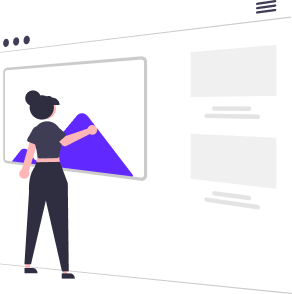Case Studies - Dashboards and OKRs
Many of the most notable companies in Silicon Valley use OKRs as their internal operating system. Along with Google and Intel, which pioneered the paradigm, these include LinkedIn, Airbnb, Dropbox, Spotify, Twitter, Uber, Netflix, and Oracle. And that’s just a few. Google takes its OKR system to full throttle by making all the Os and KRs fully transparent. Any employee at Google can look up anyone else’s targets and how they’ve performed. Other organizations utilizing OKRs include:
-
Clickup. A cloud-based collaboration and project management tool that can be used by most businesses, no matter what their size or industry.
-
Klipfolio. A Canadian, cloud-based Dashboard company that enables users to build real-time business Dashboards, access them from several devices, and share them instantly with colleagues. Users can connect to multiple data services, automate data retrieval, and manipulate and visualize that data.
-
Tableau. This self-described “world’s leading analytics platform,” purchased by SalesForce in 2019, specializes in visualization techniques for exploring and analyzing relational databases, online analytical processing cubes, cloud databases, and spreadsheets to generate data visualizations.
-
WeWork. In one of the biggest business catastrophes in decades, WeWork made the critical mistake of hyper-scaling before getting its unit metrics right. Their Dashboards didn’t highlight this important information—and the company scaled its losses in its global quest for growth.
-
The Trading Desk. This is a US-based multinational company that uses real-time programmatic marketing automation technologies, products, and services to personalize digital content for users. “Programmatic” marketing is an automated, real-time process that enables instant decision-making based on known user data points, making possible a highly personalized consumer experience. The Trading Desks offers a self-service publishing platform for brands and advertisers, as well as a platform for advanced analytics.
-
eHang. This Chinese company aims to make safe, autonomous, eco-friendly air mobility accessible to everyone. eHang’s command-and-control center features the ultimate Dashboard: a visualized platform that displays the real-time flight data and status of every eHang aerial vehicle, including battery level, flight altitude, speed, altitude, and position, as well as real-time audiovisual communication between passengers and ground personnel.
-
Strava. This is a “quantified-self Dashboard” that enables users to link various Dashboards to track physical exercise. Strava is, essentially, a DaaS (Dashboard as a Service) that uses GPS data and integrates systems, including Garmin and Fitbit, to monitor distance, time, speed, and other metrics on a sophisticated Dashboard. Users can join incentive programs and compete against themselves or other athletes. Many Olympians are on Strava, and users can follow them on the Dashboard.
-
TensorBoard. This is a common machine-learning Dashboard for monitoring training progress and improving model performance. The TensorBoard toolkit displays a Dashboard where logs can be visualized as graphs, images, histograms, embeddings, texts, and more. TensorBoard also tracks information gradients, losses, metrics, and intermediate outputs. Its competitor, Weight and Biases, features experiment tracking, dataset versioning, and model management.
Join Our ExO Community - Unlock Exponential Growth!
Traditional growth models risk obsolescence. Learn how to become an Exponential Organization (ExO) and drive innovation with disruptive technologies. Sign up now!
Organizations implementing the formula have delivered over
- ⭐ 6.8x high profitability
- ⭐ 40x higher shareholder returns
- ⭐ 11.7x better asset turnover
- ⭐ 2.6x better revenue growth








